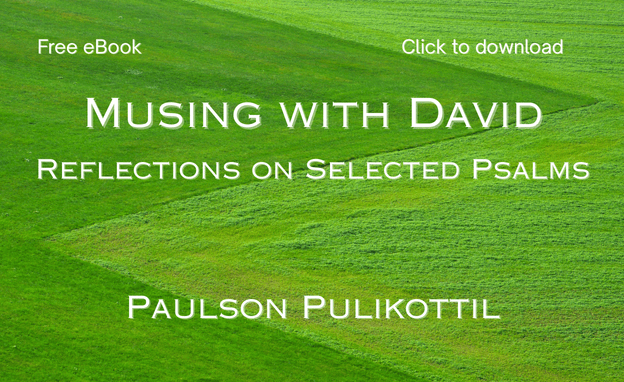21st September, 2025
A Fountain Publication

The Lodestar
Online Magazine for the Thinking Christian

Views
Man and Woman: A Relationship Built on Mutuality
“The author argues that the Bible mistranslates "side" as "rib" for women's creation. But Adam calls her "bone of my bones," showing equal substance. This challenges ideas of male dominance and suggests a deep, mutual partnership between man and woman.
By Ishi Dass on 8th March, 2024
Humankind is a splendid spectacle of God’s creative prowess. While the man was formed from the ground, the woman was formed from the man. "She shall be called 'woman,' for she was taken out of man." (Gen. 2:23b NIV). The English translations of the Bible have conveniently reduced the meaning of the Hebrew term tsela to just a “rib” when it refers to “side.” Even Adam himself clarifies this in Gen. 2:23a, "This is now bone of my bones and flesh of my flesh..." Here's a highly elaborate description of “woman” given by Adam, which is noteworthy. Simply put, he refers to someone identical to him in substance. This tiny alteration in the interpretation of the Creation Narrative makes a huge difference. It breaks the general presumption of a patriarchal mindset that since the man was formed first, he has higher authority. It also uncovers a ground-breaking truth behind God's purpose of creation: the shared principle of mutuality.
If the woman was indeed formed from the man's side, it exudes a clear depiction of the primal creature being split into two equal halves. So, does that mean when God created Adam (mankind), “it” consisted of both male and female attributes (Gen. 1:27)? Well, that's a discussion for some other day. However, this means that the woman is the other half of the man and vice versa. Upon thinking closely, it makes complete sense why husbands and wives introduce each other to people as "my better half". The phrases "bone of my bones" and "flesh of my flesh" indicate extreme intimacy and a heightened state of dependency. This dependency was supposed to be mutual between the man and the woman.
This reminds me of one purpose of the creation of the woman that is indicated in Gen. 2:18, "...It is not good for the man to be alone. I will make a helper suitable for him." The Hebrew term ezer, which refers to "help" or "helper" is a masculine noun. Who would have thought that the most suitable helper (masculine) would be a female? This must break another stereotype that women cannot help men concerning strength or "typical manly affairs." Someone once asked me about this matter: "Who requires help? The strong or the weak?" I am not trying to compare the strengths of the two sexes. It is just that sometimes you need help, but other times you are the help. That is the principle of mutuality in a nutshell.
As far as scripture is concerned, the woman was created as the most suitable helper for the man. Two different individuals - made of the same substance. Two different biological functions combined to co-create life with God. There are two different roles to play in one's life together. This unity in diversity kind of picture God is creating through the principle of mutuality is unique and awesome. For this very reason, a husband and a wife share an incredibly intimate bond since they are two entities meant to be one.
Share this Article
Advertisements
Explore More on The Lodestar

Faith and Politics
How should Christians engage in today's public sphere? Rooted in Jesus' example, our political involvement must reflect humility, justice, and compassion—serving others as we seek to honour God’s...

Unlocking the Door to a Calmer Mind
Anxiety can feel like a maze with no way out. In this blog, we'll explore practical strategies and insights to help you find your way, regain your peace, and live a more fulfilling life. Let's embark...
Subscribe to our free weekly digest.
Join hundreds of others who have subscribed to our free weekly digest for inspiring news, faith, community, family, opinion, and culture content. Stay connected and nurture your spiritual growth with thought-provoking articles delivered straight to your inbox.
Join our growing community of readers today.

